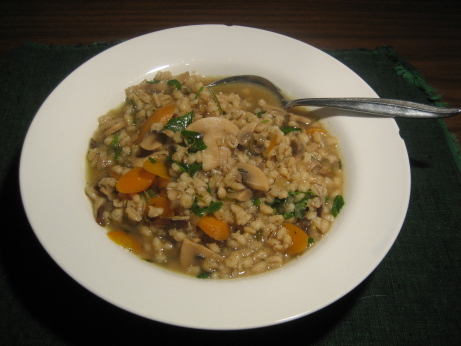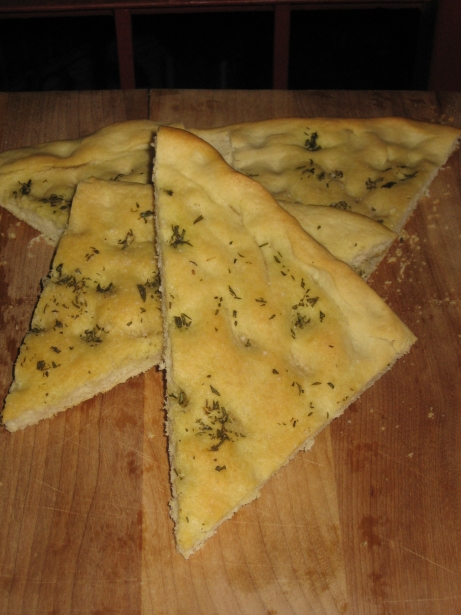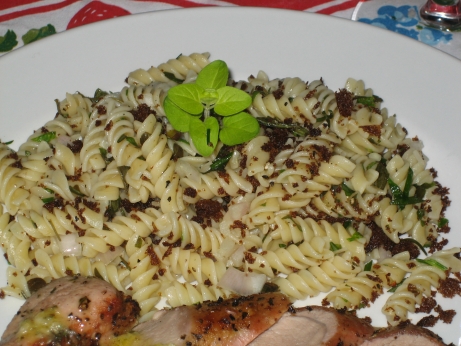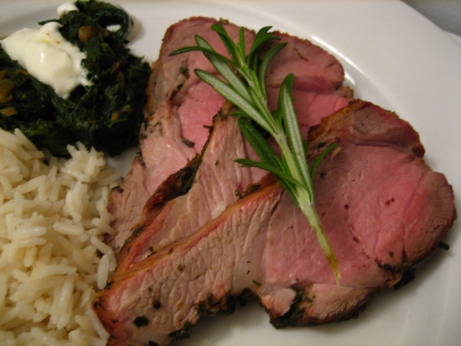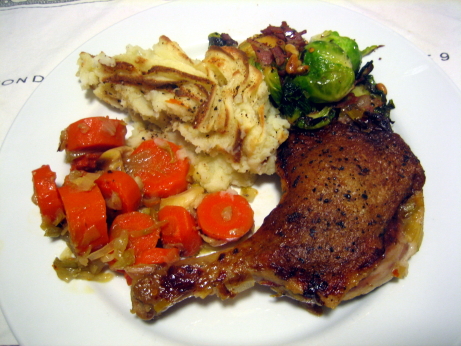
The recipe is from Fergus “Nose To Tail” Henderson’s London restaurant, St. John.
My dining companion and I adore duck, and eat it often, so a new preparation is always exciting for us. I really like the thinking behind this recipe. It takes an underused part of the duck, and brings out its absolute best. Incidentally duck legs are a wonderful bargain, they’re exceedingly flavorful and they’re nicely inexpensive. Duck breasts and fattened livers are worth their weight in gold, but that means that there are a lot of legs hanging around, and there’s only so much demand for duck confit. There’s loads of duck produced in Quebec, so it’s always easy to find.
In this recipe duck legs are trimmed of excess fat, and that fat is rendered in a skillet. The legs are seasoned with salt and pepper, and browned in batches. Most of the fat is then discarded from the skillet and a mixture of chopped leeks, onions, and garlic are softened. A truckload of sliced carrots are then added to the pan and cooked for a few minutes. The veg is then seasoned with salt and pepper, and spread in the bottom of a roasting pan. A bouquet garni of parsley, rosemary, and bay leaves is added to the veg, along with a jalapeño. The duck breasts are then nestled on top of the carrots, and chicken stock is added until it covers most of the legs, but the skin is left exposed to the direct heat of the oven. The dish is then baked at 400 for an hour and half-ish. The duck and carrots are served with the defatted juices on the side.
I was really pleased with what this preparation did for the duck. The meat was falling off the bone tender, and perfectly braised, while the all important skin was cracklingly crisp. The meat gave up some of its goodness to the surrounding liquid, but it has flavour to spare, and it benefited from the arromatic infusion. I would happily eat this duck again and again, but I’d leave the carrots off the plate. Carrots braised for an hour and a half are well in to mushy territory, and there were a lot of them. Everyone at dinner was going back for seconds on the potatoes and Brussels sprouts, but the bowl of carrots was mostly ignored. It actually tasted pretty good, but the texture was just not appealing. I’d leave the carrots in the kitchen when you make this, and turn them into the basis for a lovely carrot soup the next day. The duck legs, and accompanying pan juices were an excellent centerpiece to the meal, and the carrots were a worthy sacrifice, in this case the good of the many outweighs the good of the few, or the one.
I liked this dish on a lot of levels, first off, the flavour was fantastic, the duck meat was heightened by the arromatic infusion, and the skin had the almost but not quite too rich quality of bacon. The meat was fork tender, and the skin perfectly crisp. I also loved the concept here, it’s a really simple and smart way to bring out the best of duck, with tender meat and crispy skin, all in one go. If the vegetables had been less done, it would have been a conceptual trifecta, and a perfect little symbiotic ecosystem. As it was I wasn’t quite sure what to do with fourteen carrots and two leeks worth of mush, and I didn’t think of making soup at the time. I turned some of it into a middling pasta sauce. As a standalone the duck and pan juices would earn about 4.5 mushrooms, but the carrots are dragging the rating for the whole dish down.
